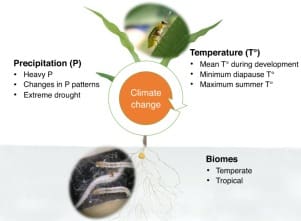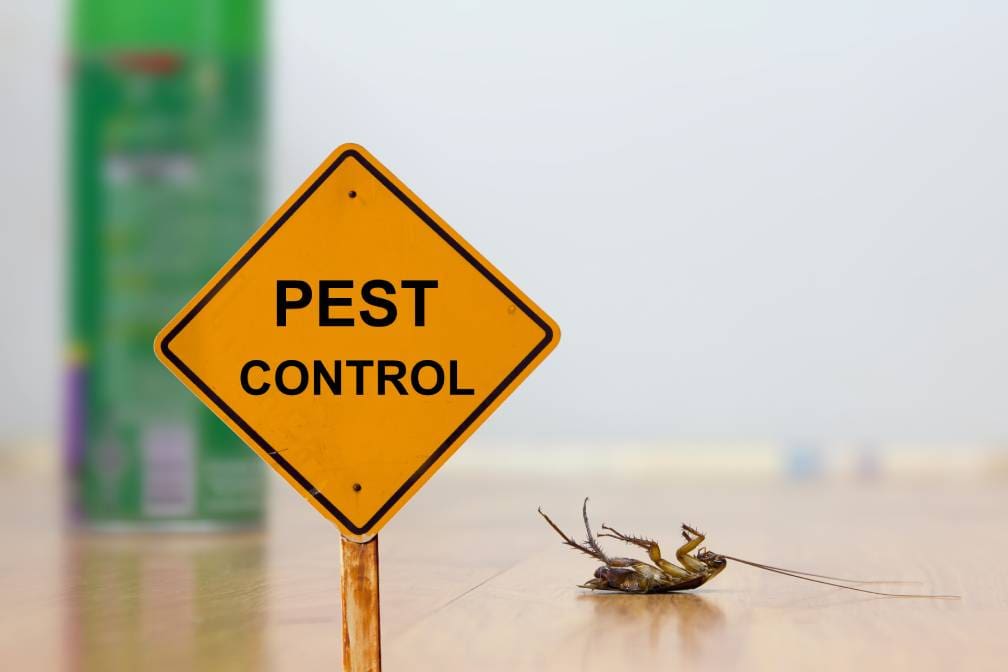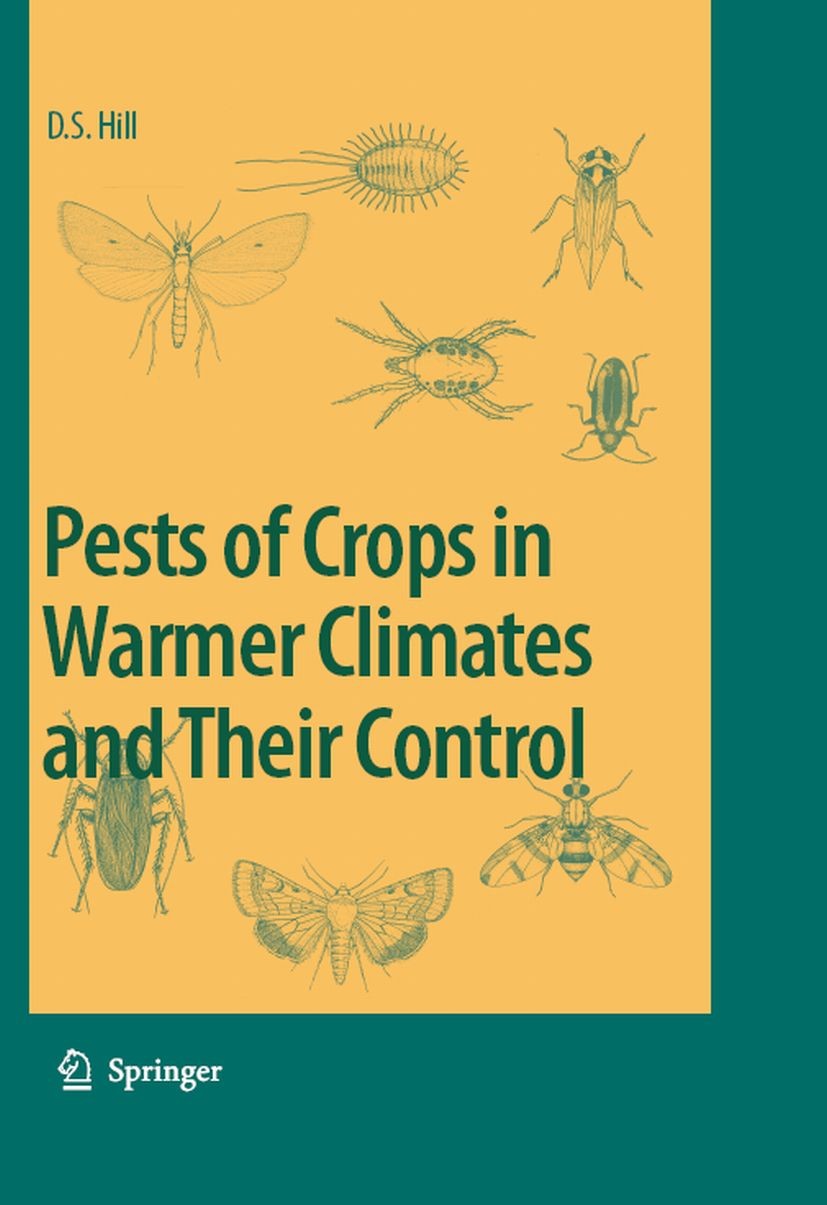Whether you’re a local resident or a visitor, dealing with pests in tropical climates can be a constant battle. From pesky mosquitos to invasive termites, these pests can wreak havoc on your surroundings, causing discomfort and potentially even health concerns. In this article, we’ll explore effective pest control solutions specifically tailored to tropical climates, helping you keep these unwanted guests at bay. From natural remedies to professional services, we’ll provide you with valuable insights to protect your home and enjoy the beauty of the tropics without any unwanted surprises.

Understanding Pest Control in Tropical Climates
Tropical climates are characterized by high temperatures and humidity, providing the perfect conditions for a diverse range of pests to thrive. In these regions, pest control becomes even more crucial, as pests can pose a significant threat to human health, property, and the environment. Understanding the unique challenges posed by tropical climates and implementing effective pest control measures is essential for residents and homeowners in these areas.
What are Tropical Climates?
Tropical climates are typically found near the equator, encompassing regions between the Tropic of Cancer and the Tropic of Capricorn. These areas experience high temperatures year-round, with minimal seasonal temperature variations. Tropical climates are also characterized by high humidity levels, which create ideal conditions for the proliferation of pests.
Why is Pest Control Important in Tropical Climates?
Pest control in tropical climates is of utmost importance due to several reasons. First and foremost, pests can spread dangerous diseases such as dengue fever, malaria, and Zika virus. Mosquitoes, for instance, thrive in tropical climates and are the primary carriers of these diseases. Effective pest control measures can help reduce the mosquito population and prevent the transmission of these illnesses.
Secondly, pests can cause significant damage to structures and property. Termites, for example, are prevalent in tropical climates and are known for their destructive nature. They feed on wood and can weaken the structural integrity of buildings if left unchecked. Cockroaches and ants are also common tropical pests that can contaminate food and damage household items.
Lastly, pests can have a detrimental impact on the environment. Invasive species such as bed bugs and fleas can disrupt local ecosystems and pose threats to native flora and fauna. Implementing pest control measures helps maintain the delicate balance of tropical ecosystems and protect native species.
Common Pest Problems in Tropical Climates
Tropical climates are home to a wide range of pests, each with its own unique set of challenges. Some of the most common pests found in tropical regions include mosquitoes, cockroaches, ants, termites, bed bugs, fleas, and ticks. Understanding the behavior and biology of these pests is crucial for developing effective pest control strategies.
Preventive Measures for Pest Control
Preventing pests from infesting your home or property is the first line of defense in pest control. By implementing preventive measures, you can reduce the chances of a pest infestation and minimize the need for more invasive pest control methods. Here are some preventive measures to consider:
Maintaining Cleanliness
Keeping your surroundings clean is essential for preventing pests from entering your home. Regularly clean your living spaces, including floors, countertops, and appliances, to remove any food debris that may attract pests. Dispose of trash promptly in sealed containers to prevent it from becoming a food source for pests.
Proper Waste Management
Proper waste management is crucial in tropical climates, as pests are attracted to decaying organic matter. Dispose of organic waste, such as food scraps and garden trimmings, in sealed bins or composting systems. Regularly empty and clean garbage cans to prevent them from becoming breeding grounds for pests.
Blocking Entry Points
Sealing entry points is an effective way to prevent pests from entering your home. Inspect your property for any gaps, cracks, or openings that pests could use as entry points. Seal these openings with caulk or weatherstripping to deny pests access to your living spaces.
Regular Inspections
Regular inspections of your property can help identify early signs of pest infestations. Look for droppings, damage to structures, and signs of pest activity such as discarded wings or shed exoskeletons. By catching pest problems early, you can address them before they become larger and more difficult to control.

Organic Pest Control Methods
For those who prefer environmentally-friendly and non-toxic approaches to pest control, organic methods can be an effective option. These methods use natural substances and biological control agents to manage pests without relying on synthetic chemicals. Here are some organic pest control methods commonly used in tropical climates:
Natural Repellents
natural repellents use substances such as essential oils, garlic, or citrus to repel pests. For example, peppermint oil has been found to be effective in repelling ants, spiders, and mosquitoes. Spray or apply these natural repellents in areas where pests are commonly found to deter their presence.
Biological Pest Control
Biological control involves using natural predators, parasites, or pathogens to control pests. For instance, introducing nematodes that feed on larvae can help control mosquito populations. Ladybugs can be introduced to feed on aphids, thereby controlling their numbers. Biological pest control methods help maintain a balance in the ecosystem by targeting specific pests.
Beneficial Insects
Introducing beneficial insects that prey on pests can help control their population. For example, lacewings and praying mantises are natural predators of many garden pests. Attracting or releasing these beneficial insects in your garden can help reduce pest populations without resorting to chemical insecticides.
Intercropping and Companion Planting
Intercropping and companion planting involve growing multiple plant species together to deter pests. Some plants, such as marigolds and basil, are known to repel pests with their strong scents. By strategically planting these pest-repellent plants alongside more susceptible crops, you can create a natural barrier against pest infestations.
Chemical Pest Control Methods
In some cases, chemical pest control methods may be necessary to effectively manage severe pest infestations. These methods involve the use of synthetic chemicals that are designed to kill or repel pests. While they can be highly effective, care should be taken to ensure proper application to minimize any potential harm to humans, pets, and the environment. Here are some common chemical pest control methods:
Insecticides
Insecticides are chemicals designed to target and kill insects. They come in various forms, including sprays, powders, and baits. Insecticides are typically applied directly to areas where pests are present or likely to be found. It is important to carefully read and follow the instructions provided to ensure safe and effective use.
Herbicides
Herbicides are used to control or eliminate unwanted weeds and plants. In tropical climates, weeds can provide breeding grounds for pests and compete with desired plants for resources. Selective herbicides target specific types of weeds, while non-selective herbicides can kill a wide range of plants. Proper application is essential to prevent damage to desirable vegetation.
Rodenticides
Rodenticides are used to control rodent populations, such as rats and mice. They are often formulated as bait, which attracts rodents and contains a toxic substance that kills them. Rodenticides should be used with caution, as they can pose a risk to non-target animals and pets. Proper placement and handling are crucial to ensure safety.
Fumigation
fumigation is a highly effective method for controlling a wide range of pests, including termites and bed bugs. It involves sealing off an enclosed space and introducing a gaseous pesticide to eliminate pests within the area. Fumigation should only be conducted by trained professionals, as it requires specialized knowledge and equipment.

Professional Pest Control Services
While preventive measures and DIY methods can be effective in managing pests, there are situations where professional pest control services may be necessary. Professional pest control companies have the expertise and resources to effectively handle severe pest infestations and provide long-term solutions. Here are some considerations when hiring a professional pest control service:
Choosing a Reliable Pest Control Company
When selecting a pest control company, it is essential to choose a reliable and reputable provider. Look for companies that are licensed, insured, and have a good track record in the industry. Ask for recommendations from friends, neighbors, or local authorities to ensure you are hiring a trusted professional.
Considerations for Hiring Pest Control Services
Before hiring a pest control service, consider the scope of the infestation and the specific pest problem you are facing. Different pests may require different treatment methods, so it is important to find a company that specializes in the type of pest you are dealing with. Ask about the company’s treatment plans, safety precautions, and any guarantees or warranties they offer.
Benefits of Professional Pest Control
Professional pest control services offer several benefits. They have access to commercial-grade products and equipment that are more effective than store-bought solutions. Pest control professionals also have the knowledge and experience to effectively identify and address pest problems. Hiring a professional can save you time, effort, and potential frustration in dealing with pests on your own.
Common Tropical Pests and their Control
Tropical climates are home to a variety of pests that can be troublesome for residents and homeowners. Understanding the common pests in tropical regions and their control methods can help mitigate the risks they pose. Here are some of the most prevalent pests in tropical climates:
Mosquitoes
Mosquitoes are notorious pests in tropical climates, and their bites are not only irritating but often carry dangerous diseases. Mosquito control measures include eliminating breeding sites by removing standing water, using larvicides, and installing screens on windows and doors. Using mosquito nets and repellents can provide additional protection.
Cockroaches
Cockroaches are resilient pests that can infest homes and contaminate food. Sanitation and hygiene practices, such as keeping the kitchen clean and sealing food containers, are essential in cockroach control. Baits and insecticides can be used to target cockroach populations, and regular inspections can help identify and eliminate their hiding places.
Ants
Ants are common pests in tropical climates and can quickly become a nuisance. Ant control measures include maintaining cleanliness, removing food sources, and sealing entry points. Baits that are specifically formulated for ants can be effective in controlling their populations while minimizing harm to other beneficial insects.
Termites
Termites are a significant threat to structures and wooden furniture in tropical climates. Signs of termite infestation include mud tubes, wood damage, and discarded wings. Preventive measures such as moisture control, regular inspections, and proper construction practices can help mitigate the risk of termite damage. Chemical treatments and natural methods, such as using nematodes, can be employed for termite control.
Bed Bugs
Bed bugs are small, blood-feeding pests that are notoriously difficult to eliminate. Detecting bed bug infestations can be challenging, but signs include bites, blood stains on bedding, and dark spots on mattresses or furniture. Cleaning and vacuuming infested areas, washing bedding on high heat, and using mattress encasements can help control bed bug populations. Professional treatments may be necessary for severe infestations.
Fleas and Ticks
Fleas and ticks are common pests in tropical regions, and their bites can cause discomfort and transmit diseases to both humans and pets. Vacuuming regularly, washing bedding and pet bedding, and treating pets with appropriate flea and tick medications can help control their populations. Outdoor areas can be treated with insecticides or beneficial nematodes to reduce flea and tick numbers.

Preventing Dengue Fever in Tropical Climates
Dengue fever is a viral infection transmitted by mosquitoes, primarily the Aedes species. It is a major public health concern in tropical regions and can cause severe illness or even death. Preventing dengue fever requires a comprehensive approach that targets mosquito control. Here are some measures to prevent dengue fever in tropical climates:
Mosquito Control Measures
Eliminating breeding sites is crucial in controlling mosquito populations. Remove any standing water from containers, flowerpots, and other areas where mosquitoes can lay their eggs. Regularly clean and scrub water storage containers to prevent mosquito larvae from developing.
Eliminating Breeding Sites
In addition to removing standing water, it is important to eliminate other potential breeding sites. Trim overgrown vegetation and keep your yard clean and free from debris where mosquitoes can hide and breed. Empty and clean gutters regularly to prevent water from accumulating.
Using Mosquito Nets and Repellents
Using mosquito nets, especially during sleep, can provide a physical barrier against mosquito bites. Apply mosquito repellents to exposed skin when going outdoors or in areas with high mosquito populations. Choose repellents containing DEET, picaridin, or oil of lemon eucalyptus for maximum effectiveness.
Community Efforts
Community-wide efforts are crucial in combating dengue fever. Educate your neighbors and community members about the importance of mosquito control and encourage them to implement preventive measures. Support local initiatives and government programs aimed at mosquito control to ensure a coordinated and effective approach.
Managing Termites in Tropical Climates
Termites are among the most destructive pests in tropical climates, causing significant damage to structures and property. Managing termites requires a multi-pronged approach that combines preventive measures and targeted treatments. Here are some strategies to manage termites in tropical climates:
Signs of Termite Infestation
Being able to recognize the signs of termite infestation is key in managing these pests. Look out for mud tubes on walls or foundations, hollow-sounding timber, discarded wings, and frass (termite droppings). By identifying the problem early, you can take prompt action to control the infestation.
Preventive Measures
Preventing termite infestations starts with eliminating conducive conditions. Ensure proper drainage around your property to minimize moisture levels, as termites are attracted to damp environments. Remove any decaying wood or cellulose materials near your home, as they can attract termites.
Chemical Treatments
Chemical treatments are often necessary for effective termite control. Liquid termiticides can be applied to the soil around the foundation of the building to create a barrier that repels or kills termites. Termite baits can also be used to attract and eliminate termites from the colony, providing long-term control.
Natural Termite Control
Natural termite control methods can be employed in conjunction with chemical treatments for a more eco-friendly approach. Beneficial nematodes can be applied to the soil to target termite larvae, and certain botanical insecticides derived from plants can repel or kill termites. Regular inspections and maintenance are also crucial for early detection and prevention of termite infestations.
Controlling Cockroaches in Tropical Climates
Cockroaches are resilient pests that can infest homes, contaminate food, and trigger allergies and asthma. Controlling cockroaches in tropical climates requires a combination of sanitation practices and targeted treatments. Here are some strategies for cockroach control:
Identifying Cockroach Species
There are several species of cockroaches that are commonly found in tropical climates. Identifying the specific species infesting your home can help determine the most effective control methods. Common species include the German cockroach, American cockroach, and Oriental cockroach.
Sanitation and Hygiene Practices
Maintaining cleanliness and good hygiene practices is essential in cockroach control. Keep your kitchen clean, promptly clean up food spills, and store food in sealed containers. Cockroaches are attracted to moisture, so fix any leaking pipes or faucets to minimize water sources.
Baits and Insecticides
Cockroach baits and insecticides can be effective in controlling infestations. Bait stations can be strategically placed in areas of high cockroach activity to attract and eliminate them. Insecticides can also be applied in cracks, crevices, and other hiding places where cockroaches are frequently found.
Natural Cockroach Control
For those who prefer natural methods, several options are available for cockroach control. Essential oils such as peppermint, eucalyptus, or tea tree oil can be used as natural repellents. Boric acid, diatomaceous earth, or baking soda can be applied in cracks and crevices as natural insecticides.
Bed Bug Control in Tropical Climates
Bed bugs are persistent pests that feed on human blood and can cause sleepless nights and itchy bites. Bed bug control in tropical climates requires a combination of cleaning, extermination techniques, and preventive measures. Here are some strategies for bed bug control:
Detecting Bed Bug Infestation
Detecting a bed bug infestation can be challenging, as they are nocturnal and hide in cracks and crevices during the day. Look for signs such as small blood stains on bedding, dark spots (fecal matter), or live bugs in the seams of mattresses and furniture.
Cleaning and Extermination Techniques
Thoroughly cleaning infested areas is essential in bed bug control. Vacuum mattresses, furniture, and carpets to remove any bed bugs and eggs. Use hot water to wash infested bedding and clothing, and dry them on high heat to kill any remaining bugs. Steam treatment can also be effective in killing bed bugs on contact.
Mattress and Furniture Encasements
Encasing mattresses and furniture in bed bug-proof covers can help prevent bed bugs from infesting these items further. These encasements create a physical barrier that prevents bed bugs from hiding in or escaping from the mattress or furniture.
Professional Bed Bug Treatment
Severe bed bug infestations often require professional treatment. Pest control professionals have access to specialized equipment and insecticides that are more effective than DIY methods. They can perform comprehensive inspections, heat treatments, or chemical treatments to eliminate bed bugs in all life stages.
In conclusion, pest control in tropical climates is essential for maintaining human health, protecting property, and preserving the environment. By understanding the unique challenges posed by tropical pests and implementing preventive measures, organic and chemical control methods, and seeking professional pest control services when necessary, residents and homeowners can effectively manage pest populations and enjoy a pest-free living environment. With proper knowledge and proactive measures, tropical climates can be enjoyed without the nuisance and risks associated with pests. Stay informed, take action, and create a pest-free tropical paradise!

I am Randy, the author behind PestControld.com. Drawing from decades of experience, I aim to provide valuable insights, expert advice, and practical recommendations to help you make informed decisions when assessing viable pest control solutions.
